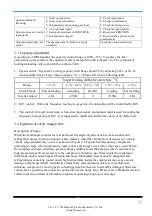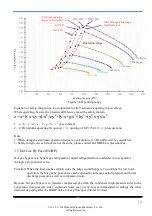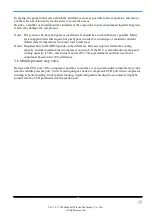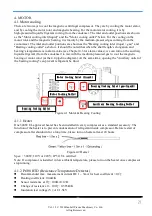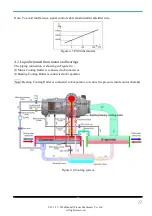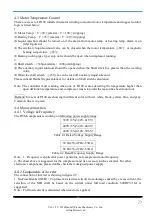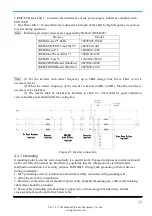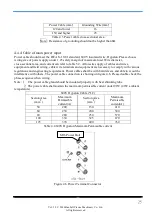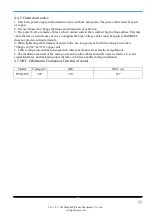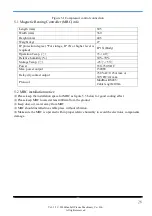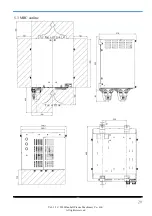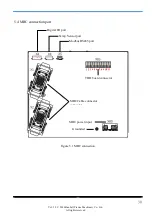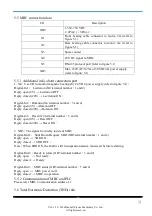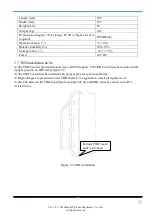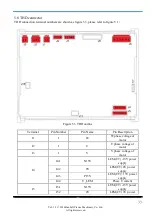
[文件標題]
[日期]
18
Vol. 1.2 © 2020 Hanbell Precise Machinery Co., Ltd.
All rights reserved
Aperture unfixable
(Hunting)
1.
Noise on signal line
2.
Noise on potentiometer
3.
Potentiometer and opening gear loose
1.
Check input signal
2.
Change potentiometer
3.
Check the fixing screws
Aperture does not match
input signal
1.
A wrong signal input
2.
Improper adjustment of ZERO/SPAN
3.
Potentiometer slipped
1.
Check the input signals
2.
Re-adjust ZERO/SPAN
3.
Re-adjust the aperture on the
potentiometer
Aperture signal does not
output
The opening signal is broken or poorly
connected
Check the wiring connection
3.3 Capacity adjustment
According to AHRI standard, the capacity control range is 100%~25%. To achieve the best
performance, please follow the equation of safety margin line (refer chapter 3.4). The compressor
loading/unloading will work with the control of IGV
:
1.
Speed control
:
In general, cooling capacity will change about 2% by adjusting 1 Hz, or 2% of
leaving chilled water temp. change (approx. 0.1
℃
). Please refer to the following table
:
Target leaving chilled water temp.: 7
℃
Range
<
6.3
℃
6.3
℃
~6.8
℃
6.8
℃
~7.2
℃
7.2
℃
~7.8
℃
>
7.8
℃
Control mode
Fast unloading
unloading
Neutral
Loading
Fast loading
Inverter output
-1Hz
-0.5Hz
0
+0.5Hz
+1Hz
2.
IGV control
:
When the frequency reaches to surge line, the unloading will be controlled by IGV.
3.
The control for target water temp. is based on input signal, and output signal is used for setting the
frequency and opening of IGV. It is suggested to install anti-interference devices on chiller unit.
3.4
Equation of safety margin line
Description of Surge
:
When the centrifugal compressor is at part load, the angle of guide vane becomes smaller and
refrigerant volume entering compressor also reduces; when the volume flow decreases to a certain
extent, surge and stall may occur. As shown in Figure 3.6 Typical fixed-frequency compressor
performance map, when compressors operate above the Surge Line, stall or surge may occur. When
the compressor surges, discharge pressure drops suddenly lower than the pressure in condenser so
high-pressured gas flows reversely to the compressor; therefore, gas flows inside the compressor
turbulently and it causes higher vibration and noise. Meanwhile, heat cannot be dissipated and
refrigerant gas cannot be cooled down; high temperature inside the compressor may cause severe
damage to high-speed shaft. In addition, alternatively varied pressure due to reverse flow may
influence compressor’s moving parts so bearings may bear heavier load and be damaged. Therefore,
compressor’s operating map must be confined below the Surge Line. Please refer to Hanbell selection
software for more details of allowable compressor operating map to prevent surge.















